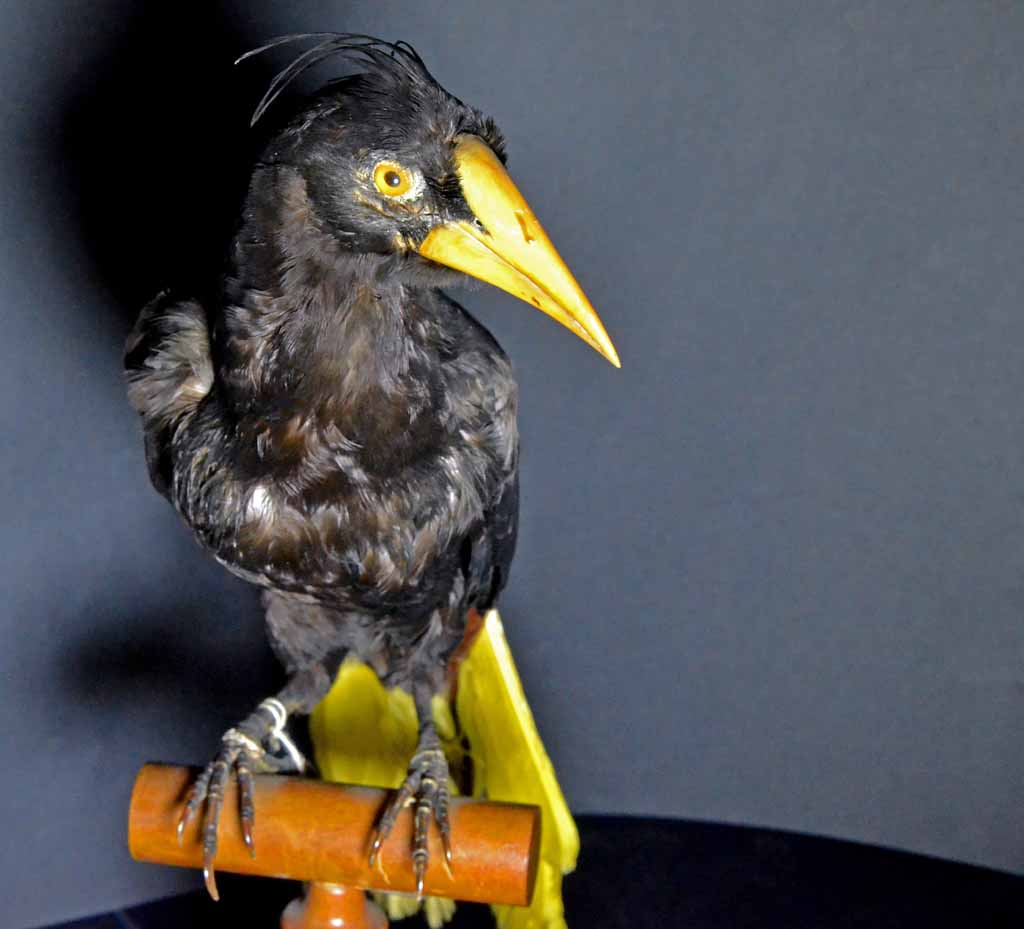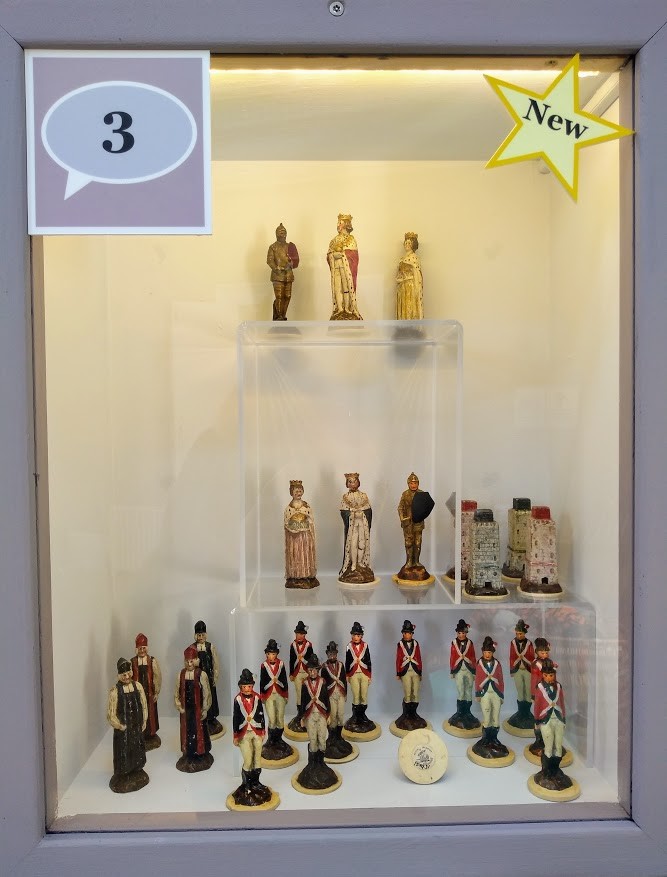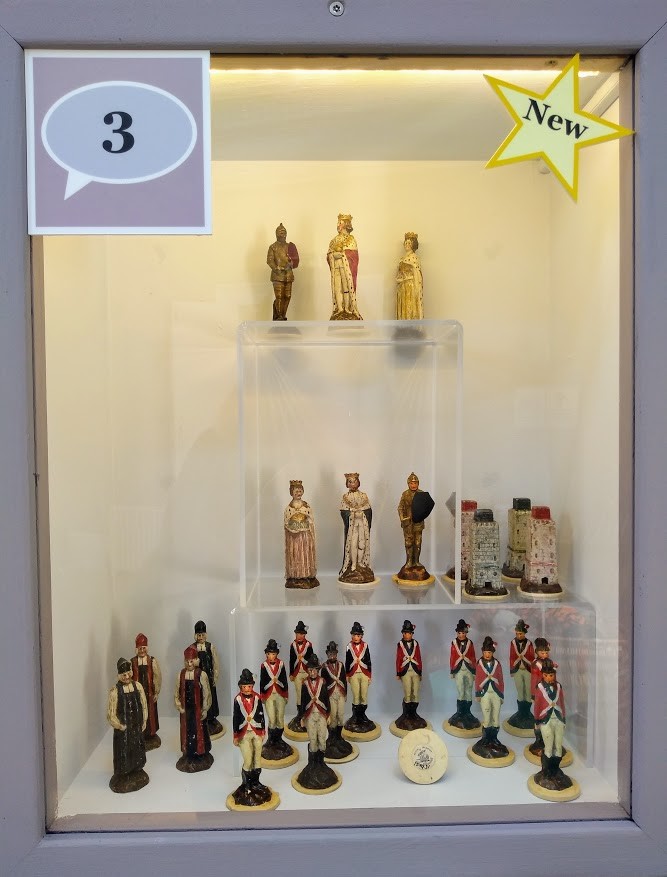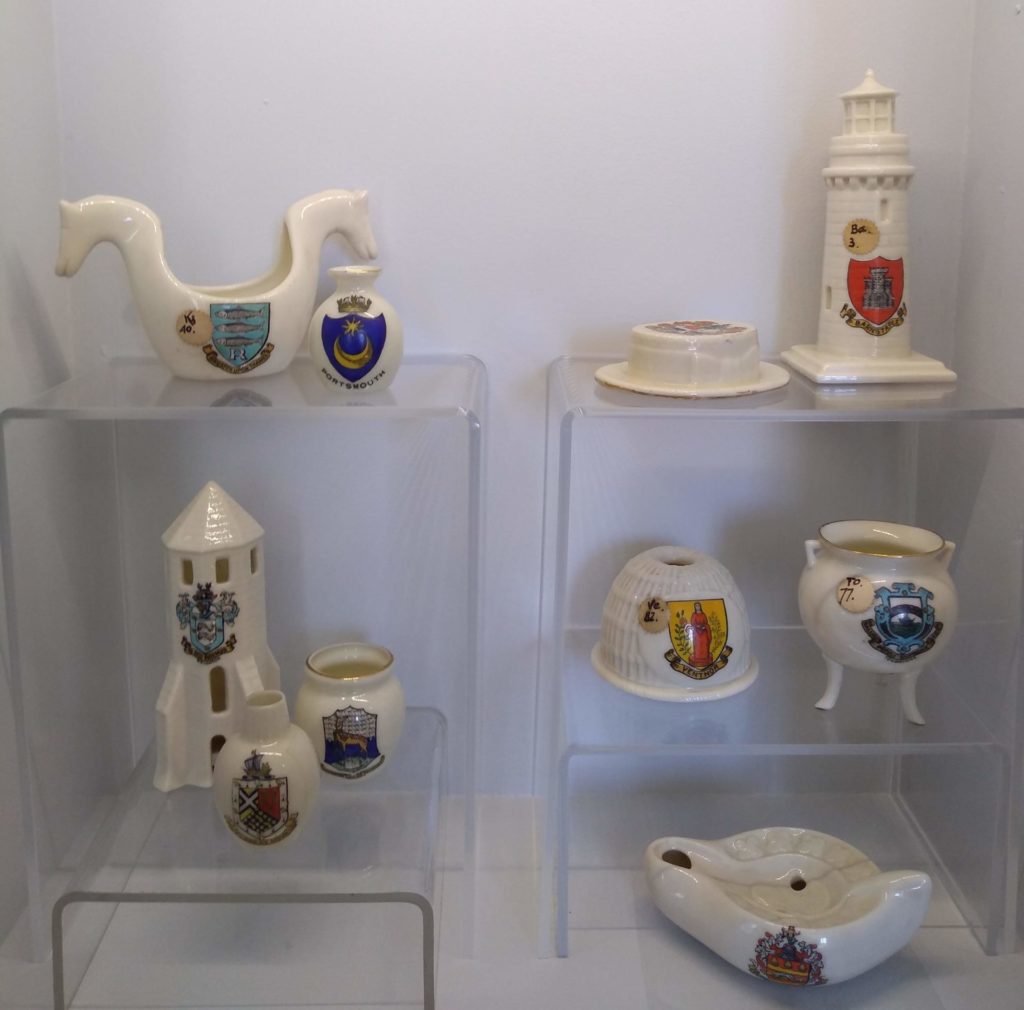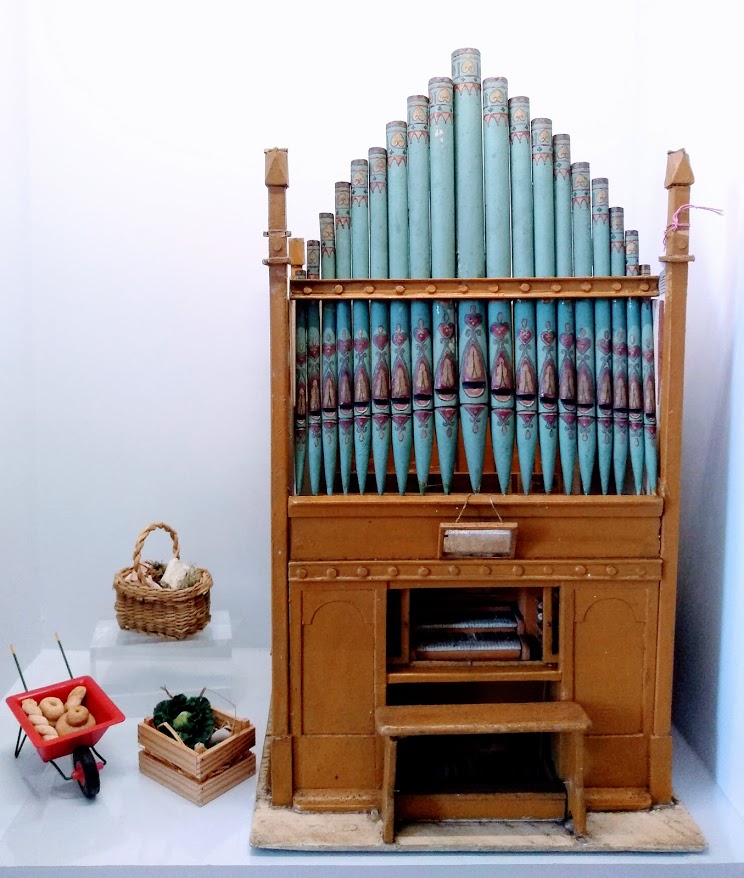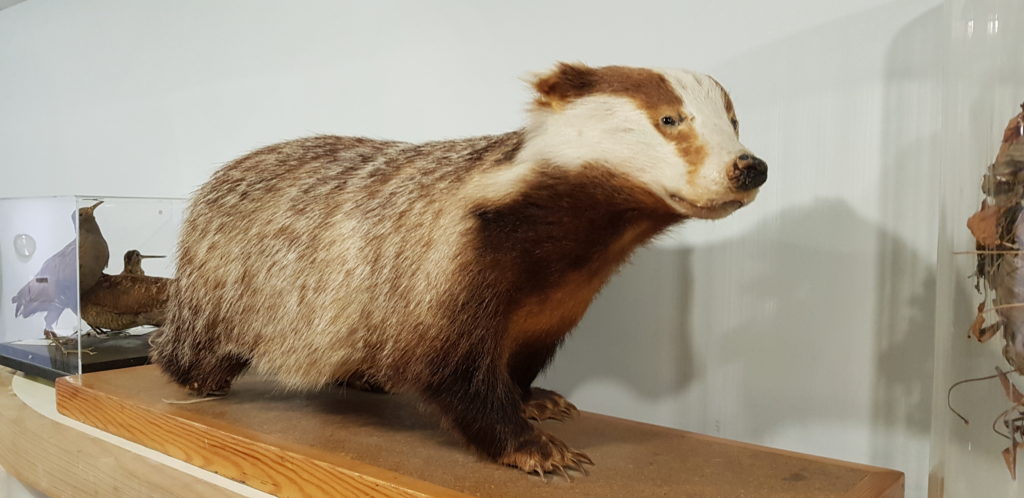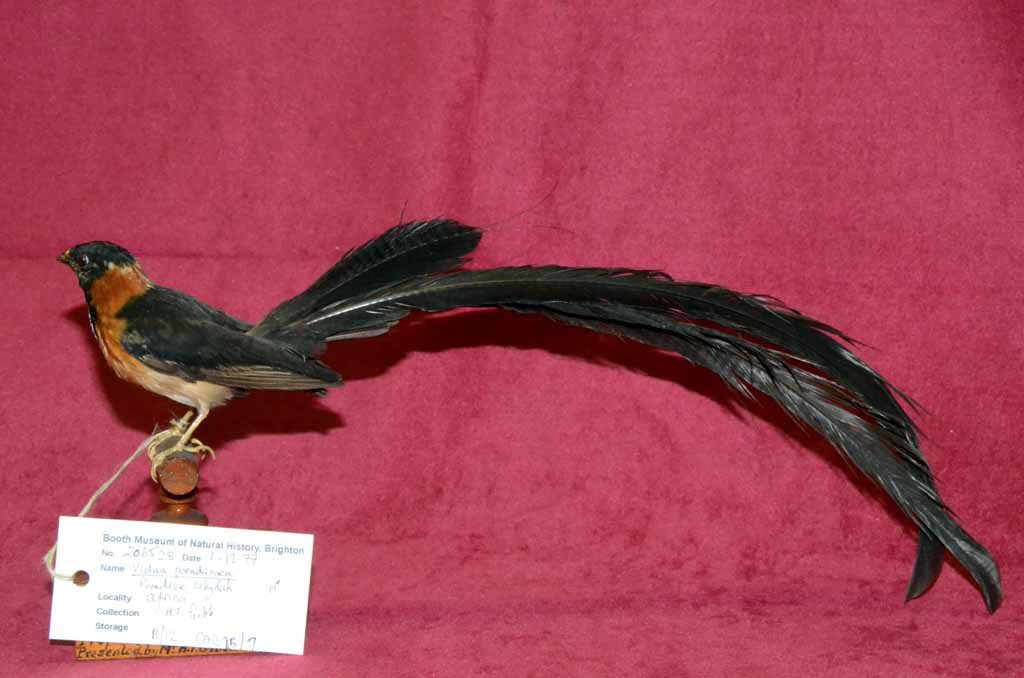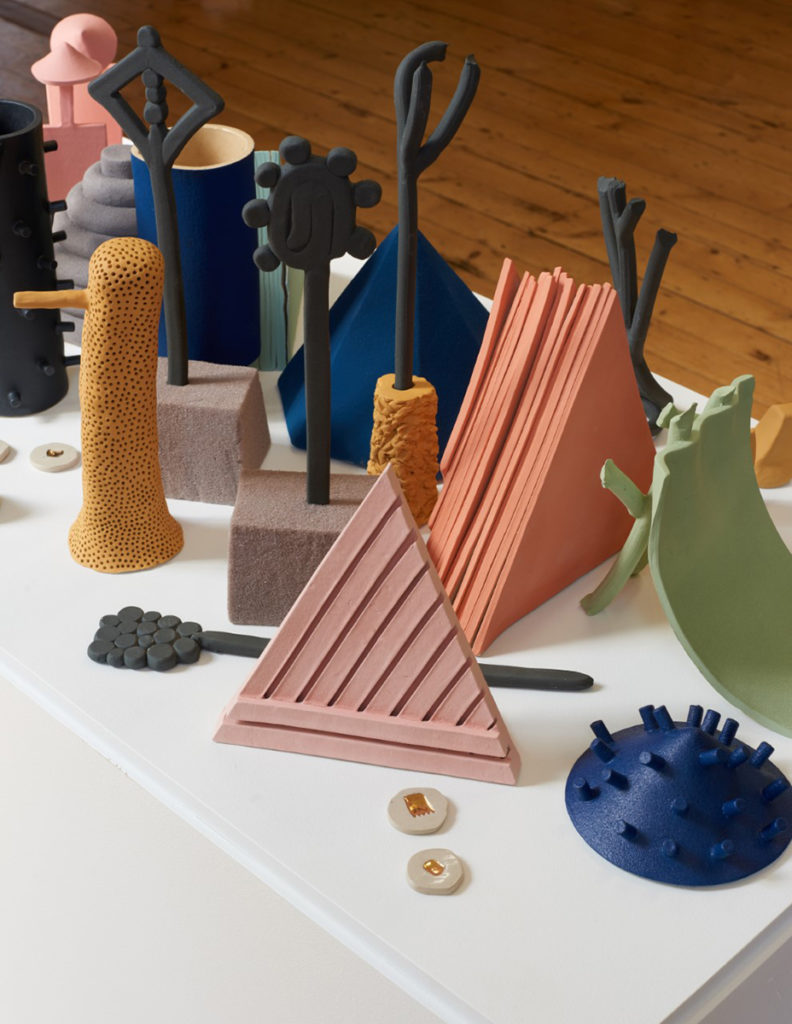
This is a legacy story from an earlier version of our website. It may contain some formatting issues and broken links.
The View from Here is a colourful installation in ceramic and steel that was recently displayed at Hove Museum.
When I saw this work at the museum I was intrigued by it and wanted to meet the artist to find out more about the way she works and the ideas behind her exhibit.

Lisa Jones is a ceramicist who is currently undertaking an MA in Craft at The University of Brighton.
Lisa says “By placing these ceramic sculptures together to create an installation I’m forming a sense of place, a topology of the museum and my response, through the material of clay, to the objects and the immense history of making”.
She suggests that we can enjoy the displays in museums a different, more aesthetic way, without so much concern for the history behind each piece.
It became clearer in conversation that Lisa is most interested in the subjective experience of the viewer. Passionate about museums (she always visits the museum when she goes to a new town) – she likes the idea that everyone can bring their own stories to each object to have an emotional response and that this makes it possible for everyone to participate.
Lisa’s work seems very playful. She spoke about her research acknowledging that while it is underpinned by theories of the politics of display, a great deal of it is practice-based. She learns from manipulating the clay, enjoying the forms and experimenting with texture. She uses both glaze and engobe and I learnt that engobe is a product that is in-between a glaze and a slip (clay mixed with water). It has a matt finish, sometimes with a texture. Colour is something that Lisa is only just starting to explore, as her previous works were monochrome.

With Engobe for texture, before and after firing.

With Engobe for texture, before and after firing.
We talked about how museum objects from different collections could share generic shapes and colours in our memories: The colours in Lisa’s installation reminded me of items from the Hove Museum craft display but she told me that her original inspiration came from displays in The Pitt Rivers Museum and Ashmolean in Oxford.
There are particular items that Lisa is drawn to in museum collections: staffs and wands, hats and loom weights, bartering tokens as well as peashooters! The objects that she is drawn to seemed to have some commonality in that they are all both useful items with the potential for a playful side: Hats are used by everyone regardless of class and income, though the actual use of the hat can differ – for safety and warmth or for pure display “frippery” as Lisa says. Mary of Wapping used a peashooter for the serious business of waking up the workers but in the hands of a school child it could be a tool of mischief and play.
Similarly Lisa wonders about the loom weights that has she has seen in museum collections: useful in weaving but without the loom they are just lumps of material ‘lumpen’ as she calls them. The ‘lumpen’ in her display have been given ever so slight human characteristics. Wands and staffs could bring to mind elders, leaders and decision makers with the weight of responsibility and wisdom, alongside thoughts about magic, fantasy and folklore.
Lisa’s installation, and many exhibitions in museums, remind me of assemblage art: an art form that started in the 1950’s that is typified by the use of three-dimensional, often found objects, placed together to make a whole. I wondered if this was an influence for Lisa – but she sees her work more like a mini museum made from individual pieces of ceramics that can also be separated to stand in their own right. Instead, her work is influenced by the ceramicist Matt Smith, who has exhibited at Brighton Museum and Preston Manor in the past. As well as creating his own ceramics, Matt Smith’s work involves curating museum displays so that they challenge the viewer’s perspective, recognising that these displays tell the story that the curator chooses to tell.
Matt Smith says: “ I am drawn instead to the emotional bonds between objects, makers, viewers and collectors in order to examine what these collections can tell us about human experiences’ and this seems to resonate with Lisa’s perspective.
Thank you to Lisa Jones for talking to me about her work. This conversation highlighted a particular way of looking at and responding to museum exhibits. It has at the heart of it a passion for spreading the enjoyment found from simply allowing a personal and emotional exploration of museum objects. We look forward to seeing more of Lisa’s work in the future.
More ceramics at Hove Museum
Cultural Icons: Remaking a Popular Pottery Tradition.
28th November 2019 – February 2020.
Six ceramicists: Joanna Ayre, Christie Brown, Claire Curneen, Stephen Dixon, Ingrid Murphy and Matt Smith have been inspired by Victorian flatback figurines and responded by making contemporary Cultural Icons.
For more information see Hove Museum Displays
Visit the Events page for details of a Gallery Talk
Louise Dennis, Community Artist
